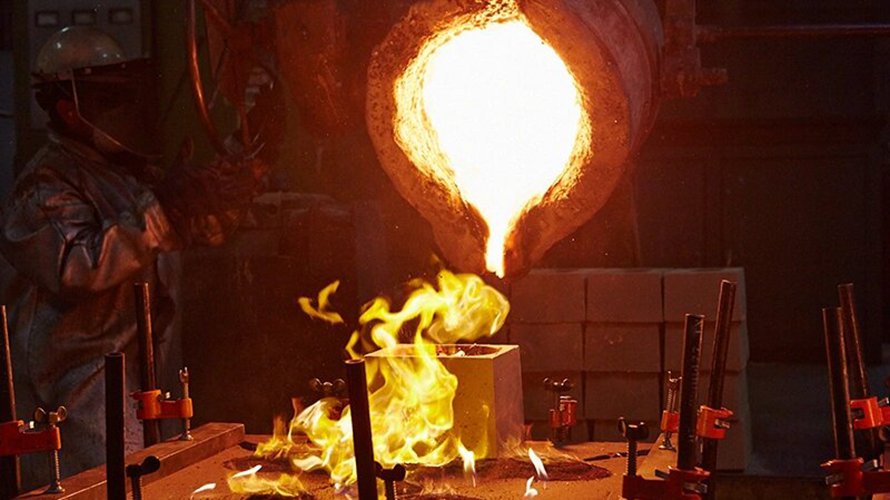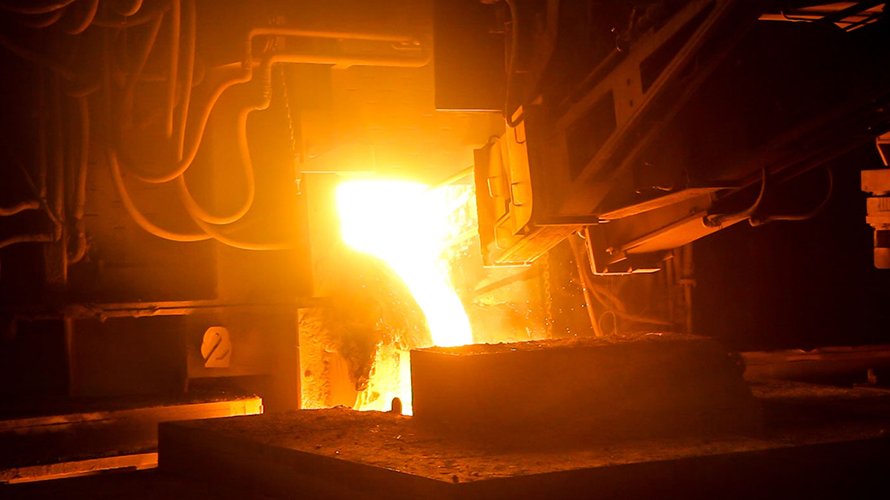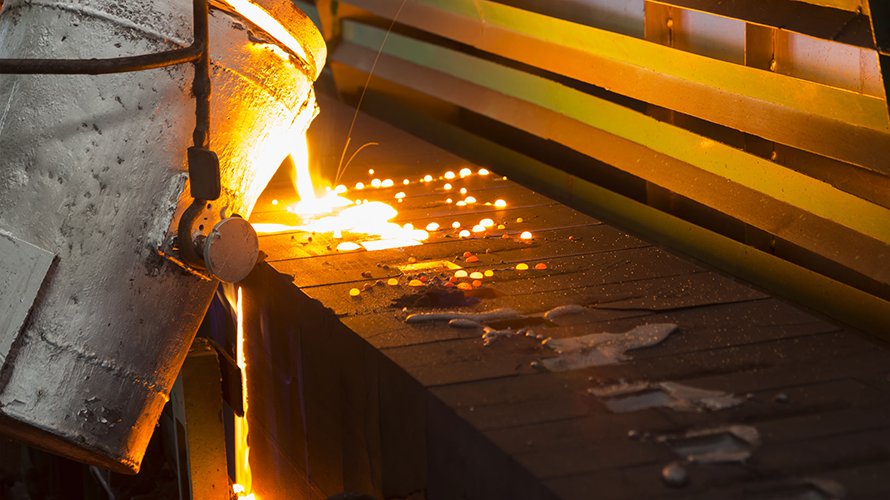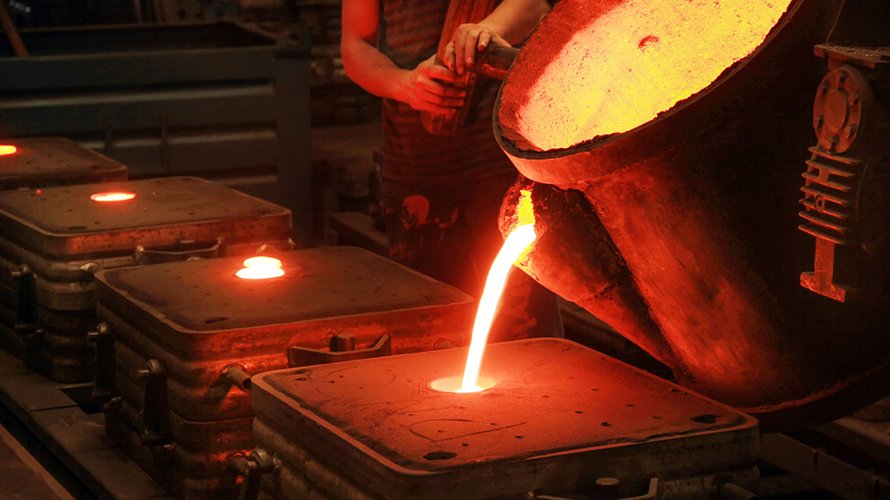The world of metal casting is evolving, and the sand casting industry is no exception. Sand casting, one of the oldest and most commonly used methods for producing metal parts, is facing new challenges and opportunities as industries demand higher-quality products, faster production cycles, and more sustainable practices. As the market continues to evolve, sand casting foundries must adapt to meet these demands, leveraging technological advancements and optimizing operational efficiency. In this blog, we’ll explore the key steps that future sand casting foundries should take to remain competitive and relevant in an ever-changing landscape.

Embrace Automation and Smart Technologies
Automation is revolutionizing manufacturing across industries, and sand casting foundries are no exception. The integration of automated systems into the casting process can significantly enhance production speed, precision, and safety. By automating tasks such as mold preparation, metal pouring, and part inspection, foundries can reduce human error, increase output, and improve overall consistency.
Advanced robotic systems can handle repetitive tasks such as mold handling, metal pouring, and core setting, which not only reduces labor costs but also ensures more accurate and uniform results. Additionally, the integration of automated sand reclamation systems helps minimize waste and reduces the environmental impact of foundry operations. These systems can recycle sand, removing impurities and preparing it for reuse, which lowers raw material costs and supports sustainable manufacturing practices.
The Rise of Smart Sensors and IoT
As the Internet of Things (IoT) continues to grow, the use of smart sensors in sand casting foundries is becoming increasingly important. These sensors can monitor various stages of the casting process in real time, providing valuable data that can be used to optimize production. For instance, temperature sensors can monitor the metal’s temperature throughout the pouring process, ensuring it is within the ideal range for casting. Similarly, vibration sensors can detect issues in mold integrity or core quality before they become major problems.
By leveraging IoT and data analytics, foundries can improve predictive maintenance, identifying and addressing equipment issues before they lead to costly downtimes. This data-driven approach not only improves product quality but also enhances operational efficiency, as foundries can make adjustments on the fly based on real-time insights.
Prioritize Sustainability and Eco-friendly Practices
As the world shifts toward more sustainable manufacturing practices, foundries must find ways to minimize their environmental footprint. Sand casting foundries use significant amounts of energy in the metal melting and pouring processes, which can contribute to high operational costs and environmental impact. The future foundry must prioritize energy-efficient technologies and practices to reduce both costs and emissions.
Adopting electric furnaces, for example, can lower energy consumption compared to traditional gas-fired furnaces. These electric systems are not only more energy-efficient but also generate fewer emissions, helping foundries meet stricter environmental regulations and industry standards. Additionally, using renewable energy sources like solar or wind power to supply electricity for foundry operations could further reduce a foundry's carbon footprint.
Emphasizing Material Recycling and Waste Reduction
Sustainability in sand casting isn’t just about energy; it also extends to materials used in the process. One of the most significant challenges facing foundries is the disposal of used sand, which can be detrimental to the environment if not managed properly. Modern sand casting foundries should focus on implementing recycling systems to reuse sand and reduce waste. With advancements in sand reclamation technology, foundries can clean and reuse sand multiple times, reducing the need for new sand and minimizing landfill waste.
Recycling metal scrap is another vital practice that future foundries should adopt. Foundries can reclaim metal scrap generated during the casting process and melt it down for reuse. This reduces the demand for new raw materials, conserves natural resources, and lowers the overall cost of production. Moreover, focusing on the use of non-toxic and eco-friendly materials will help improve the foundry’s sustainability credentials, which is becoming increasingly important to consumers and regulatory bodies alike.

Enhance Quality Control and Precision Engineering
As industries demand higher precision and more complex geometries in sand casting, foundries must adopt advanced technologies that enhance the accuracy and consistency of their castings. One of the most significant tools in improving casting quality is simulation software. By using computer-aided design (CAD) software and casting simulation tools, foundries can predict and optimize the flow of molten metal in molds, analyze solidification patterns, and anticipate defects before they occur.
Simulation tools allow foundries to identify potential problems such as air pockets, shrinkage, or misruns in the mold. By adjusting the design of the mold or the pouring process based on simulation data, foundries can achieve higher-quality castings with fewer defects, reducing the need for rework and improving customer satisfaction.
Non-Destructive Testing (NDT) Technologies
To ensure that cast parts meet stringent quality standards, future sand casting foundries should invest in non-destructive testing (NDT) technologies. NDT methods such as ultrasonic testing, X-ray imaging, and dye penetrant testing enable foundries to detect internal defects and surface flaws in cast parts without damaging them. These technologies are crucial in industries like aerospace, automotive, and energy, where component reliability is critical.
By incorporating NDT into their quality control processes, foundries can catch defects early in the production process, preventing costly scrap and rework. Furthermore, implementing robust quality control systems based on real-time data and NDT results can enhance the traceability and transparency of the foundry’s operations, ensuring that every part meets the required specifications.

Foster Collaboration and Innovation Across Industries
The future of sand casting foundries lies in building strong, collaborative relationships with customers and suppliers. By working closely with customers, foundries can gain a deeper understanding of their specific needs and requirements, ensuring that cast parts meet or exceed expectations. Collaborative design processes, where customers provide input early in the design phase, can help identify potential issues with the casting process and result in more efficient production cycles.
Equally important is collaborating with suppliers of raw materials, equipment, and technology. By maintaining close relationships with suppliers, foundries can stay ahead of the curve when it comes to accessing the latest materials, tools, and technological advancements. This allows them to continuously improve the quality of their products, optimize their production processes, and stay competitive in a rapidly changing market.
Embracing Industry 4.0
The adoption of Industry 4.0 technologies, such as advanced robotics, AI, and machine learning, will be essential for the future of sand casting foundries. Industry 4.0 allows for the seamless integration of smart systems and automation, enabling foundries to streamline operations, reduce costs, and improve overall performance. AI and machine learning algorithms can analyze data from sensors to predict maintenance needs, optimize production schedules, and ensure higher levels of precision in the casting process.
By embracing these technologies, sand casting foundries can transition from traditional methods to a more modern, interconnected, and data-driven approach to manufacturing. This not only enhances the quality of castings but also allows foundries to improve their agility and responsiveness to market demands, leading to greater customer satisfaction and competitive advantage.

Conclusion: Adapting to the Future of Sand Casting
As industries continue to evolve, sand casting foundries must adapt to meet new challenges and capitalize on emerging opportunities. Embracing automation, sustainability, precision engineering, and collaboration will be essential for the future of the industry. By investing in smart technologies, reducing their environmental impact, and focusing on high-quality, precision castings, foundries can position themselves for long-term success in a competitive global market.
The foundries of the future will be more efficient, sustainable, and customer-centric, driven by innovation and a commitment to excellence. By continuously improving their processes and embracing the advancements that shape the future of manufacturing, sand casting foundries will not only survive but thrive in an ever-changing industrial landscape.








